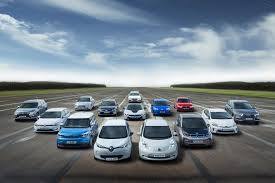Problems of using electric vehicles in winter and their solutions
 Lithium-ion batteries are very sensitive to temperature. At the same time they are equally bad tolerate extremely high and too low temperature, because when it gets very cold, the electrolyte liquid inside the battery becomes viscous and quickly loses its accumulating quality. This is especially critical for those electric vehicles that do not have their own battery temperature control system.
Lithium-ion batteries are very sensitive to temperature. At the same time they are equally bad tolerate extremely high and too low temperature, because when it gets very cold, the electrolyte liquid inside the battery becomes viscous and quickly loses its accumulating quality. This is especially critical for those electric vehicles that do not have their own battery temperature control system.
Also, unlike the engine of cars in which the engine produces its own heat, which “heats” the car, electric cars should take this heat somewhere else, as a rule, starting the heater, which is reflected in the battery life and reducing the power reserve.
In addition, at extreme temperatures, the on-Board computer can block the energy reserve in the battery for its safety, since the battery is the most important and expensive component of electric vehicles.
For example, Tesla electric cars do so, warning that part of the stored energy in an electric car in cold weather may not be available and even adds a snowflake indicator next to the power reserve data.
However, such a reserve is provided in almost all modern electric vehicles, because the discharge of the battery to full “zero” is one of the most undesirable moments for the “health” of the battery of the electric vehicle, in addition, can be critical in the winter, since the on-Board systems of electric vehicles do not always correctly display the mileage.
When it comes to the operation of an electric car in cold weather, there are often 2 negative points: limiting the possibilities of regenerative braking, or rather the transfer of the energy produced by it to the battery and reducing the charging speed, especially fast, to protect the battery.
How to use the battery life in winter and avoid possible problems with the rapid loss of battery life, we have already described in detail in one of our articles, we also published recommendations on this issue from the manufacturers of electric vehicles.
In the longer term, to solve the problem of using electric cars in cold weather, scientists are working on creating solid-state batteries that do not have liquid and that will not be so sensitive to low temperatures. But while they are at the stage of laboratory development, in the next 5-10 years, drivers will have to follow a few simple rules that will maximize battery life in the winter:
garage storage of electric vehicle (if possible);
constant charging of the electric vehicle;
support remote communication with the electric car, check the battery status;
reasonable use of the climate system (including heating of local areas such as the steering wheel or seats, not the entire cabin);
driving in economy mode;
Parking in the sun;
warming up the electric car when it is still connected to the network.
In the end I would like to note that the cold weather is not the enemy of the electric car and its battery, much more damage to the battery can cause it to overheat. The only disadvantage is that in winter the power reserve objectively becomes smaller due to the blocking of the capacity reserve and the active use of climatic systems, in summer in hot weather, when the battery overheats, its degradation occurs.




